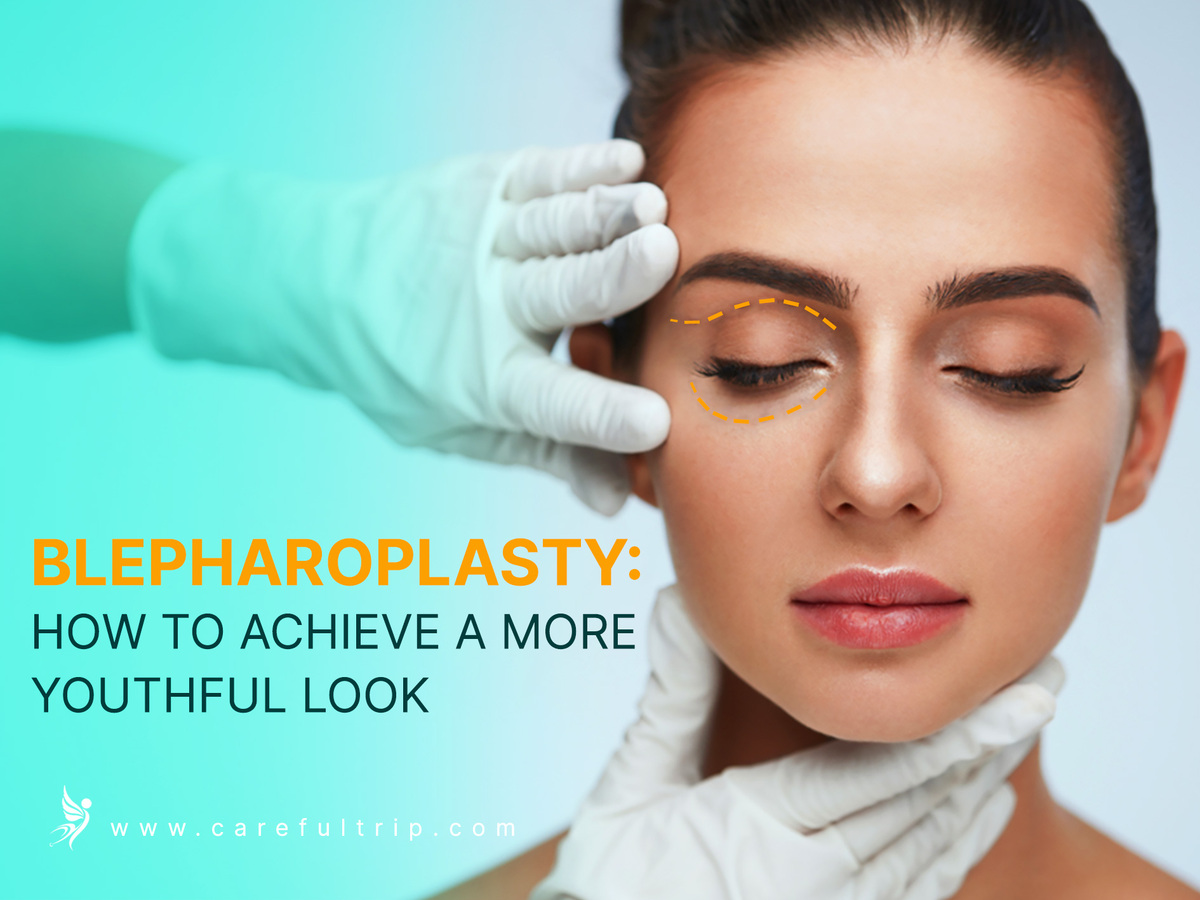
Beauty and rejuvenation have become one of the public’s prominent concerns. Recent progress in beauty procedures has tremendously facilitated achieving the desired appearance by optimally removing facial defects. Accordingly, some cosmetic procedures are considered outpatient and have a therapeutic function while free of severe pain or bleeding. The eyes, which play a significant role in facial beauty, can be the object of cosmetic surgery in case of a defect. Blepharoplasty is one of these procedures performed on the upper and lower eyelids. The purpose of this operation is to make the eyes look more beautiful and to remove eyelid defects. The upcoming article will explain blepharoplasty and related issues in detail.
What Is Blepharoplasty?
As mentioned earlier, blepharoplasty is a cosmetic surgery performed on the upper, lower, or both eyelids. In blepharoplasty, surgeons remove part of the skin or excess fat to rejuvenate eyelids, enhance their appearance, and improve their function. As a result, eyelid drooping is removed, and wrinkles and darkness around the eyes are abolished. This procedure is usually safe, and you do not require hospitalization. It is worth mentioning that the surgeon’s expertise and the quality of the operation are involved in this matter. Moreover, the side effects following the surgery are not severe and will disappear within a few days.
In short, blepharoplasty is used for the following:
– Loose and sagging eyelid skin that creates folds.
– Draping eyelid skin that causes vision problems.
– Excess accumulated fat under the eyes that causes puffiness.
– Wrinkles of the lower eyelids.
Blepharoplasty for Treatment
Blepharoplasty is used for treatment when there is a problem in the structure and function of the eyelids that puts one’s health at risk. Sometimes the extra skin or fat of the eyelids makes them heavy and gradually disturbs vision. You may raise your eyebrows and forehead muscles to improve your vision, but it is followed by the inevitable side effect of wrinkles in the forehead area. With blepharoplasty, these problems can be prevented and treated.
Blepharoplasty for Beauty
Beautification and rejuvenation are among the other applications of blepharoplasty, though they are not requisite in treatment. Various factors can lead to eyelids dropping, such as aging, genetic issues, sun exposure, and an unhealthy lifestyle. This occurs due to the reduction of elasticity of fibers, reduction of collagen, weakening of eyelid muscles, and accumulation of fats, as they bring about a puffy and swollen state. All these factors can have a hand in disfiguring your appearance, making you look tired and older. The good news is that ophthalmologists or plastic surgeons can ameliorate eyelid defects via blepharoplasty.
Notably, blepharoplasty is not only performed on the upper eyelid but also on the lower eyelid. The puffiness under the eyes will disappear by removing the accumulated fat under the eyes through blepharoplasty. Surgeons can perform upper and lower eyelid surgery simultaneously if needed.
For more information, read:
What Are the Steps of Blepharoplasty?
Blepharoplasty is an outpatient procedure and may take between one and three hours, depending on the condition of the patient’s eyelids.
Anesthetizing
In the first stage, the doctor chooses one of the methods of anesthesia after examining the conditions of the person applying for blepharoplasty. Nonetheless, this operation is usually done by injecting anesthesia (local anesthesia) medicine into the eyelids and sometimes sedating the veins. General anesthesia might be used in the case of both upper and lower eyelid surgery.
During the Surgery
During the surgery, the doctor cuts the eyelid along the arch, removes excess fat and skin, and stitches the incision. In this way, the upper eyelid is pushed upwards.
After the Surgery
Blepharoplasty does not require hospitalization; you should stay under the doctor’s supervision only for a few hours after the operation. That said, post-operative measures are essential in your surgical process after you return home. Follow them precisely to get your desired result sooner.
Who Are the Candidates for Blepharoplasty?
As mentioned above, most people decide to have blepharoplasty for beautification to remove excess fat or skin and eliminate the eyelids’ puffiness. Yet, treatment might be the primary purpose for some individuals, such as drooping of the upper eyelid that disrupts normal vision, as well as the defect of the lower eyelid that puts the whiteness of the eyes into more exposure, which, consequently, can result in dry eyes. In general, people with the mentioned problems and with the following characteristics are suitable for blepharoplasty:
- Those who do not have specific underlying diseases such as chronic dry eyes, thyroid disorders, diabetes, heart disorders, and hypertension.
- Non-smokers.
- Those who have realistic expectations of the result of surgery.
- Those not looking for blepharoplasty to remove drooping eyebrows, dark circles under the eyes, or wrinkles.
The Right Age for Blepharoplasty
People who undergo blepharoplasty have an average age of 35 years and above. However, this surgery has no age limit; younger people can also be eligible for the operation with the doctor’s diagnosis if there is a defect in the eyelid.
For more information, read:
Complications After Blepharoplasty
Every surgery comes with unwanted side effects. The good news is that in the case of blepharoplasty, the side effects are usually mild and can be resolved before long with proper care. However, choosing a qualified and reliable surgeon is a vital factor. The following are some side effects that may involve the patient after the operation:
- Swelling and bruising of the eyelids and disability to completely close the eyelids: This condition can be solved faster with the help of an ice compress.
- Remaining scars: This depends on the surgeon’s proficiency in making the incision. However, the stitches will disappear after a few weeks; you could use repair creams to accelerate recovery.
- Blurred vision or diplopia.
Post-operative Care After Blepharoplasty:
Following these tips will help shorten the recovery period:
- Sufficient rest and avoiding heavy activities, and shaking the head. Make sure you place your head higher than your body when resting to bring down blood flow to the head and reduce inflammation.
- Using an ice compress to reduce swelling and bruising.
- Using eye drops or artificial tears to prevent dry eyes.
- Punctual and correct use of antibiotics and tranquilizers.
- Applying the prescribed cream on the wound.
- Using sunglasses to protect the eyelids.
Conclusion
Blepharoplasty can notably boost your self-confidence by freshening your face. It is a successful operation in most cases, and people’s satisfaction with the result of surgery and their faces attest to the claim. In addition to the advantages of blepharoplasty, you should also keep in mind that due to the sensitivity of the eyelids and eyes, this surgery must be performed with great care and skill so that the eyes are not damaged. Be careful in finding a skilled surgeon to minimize the complications of this surgery. If you’re looking for a professional surgeon for blepharoplasty, CarefulTrip may help you contact the best surgeons in Iran.
For more information, read:

